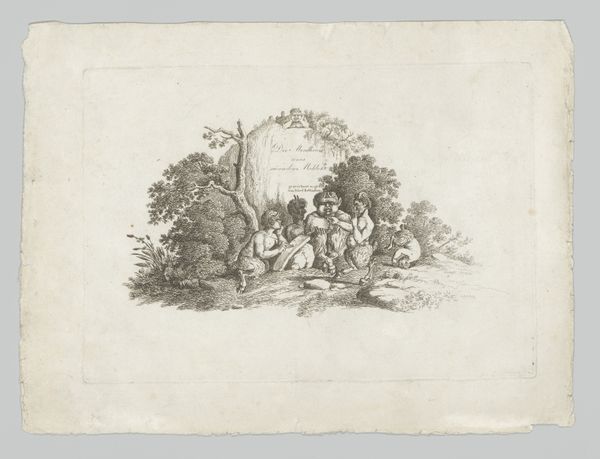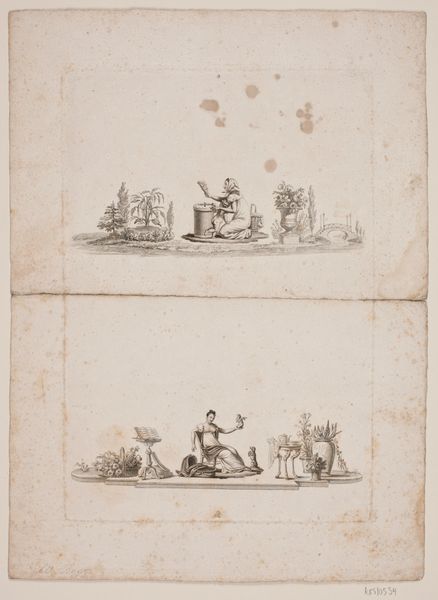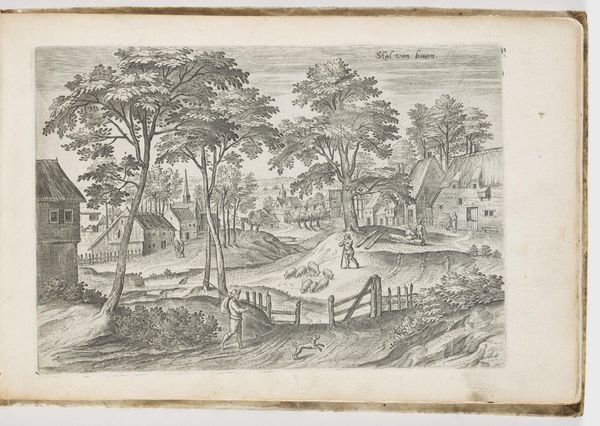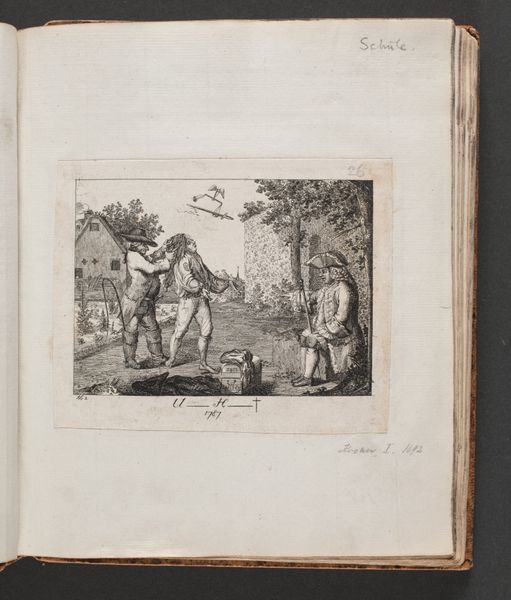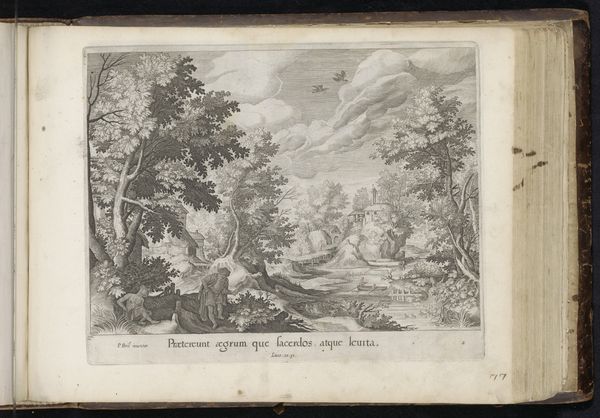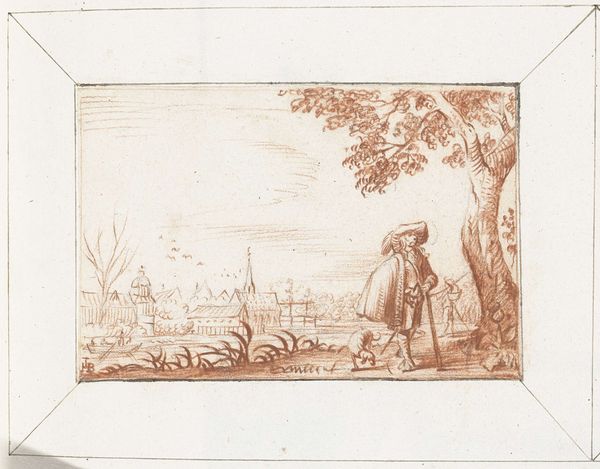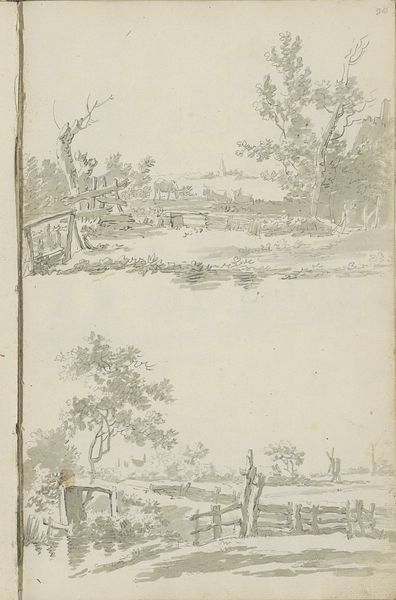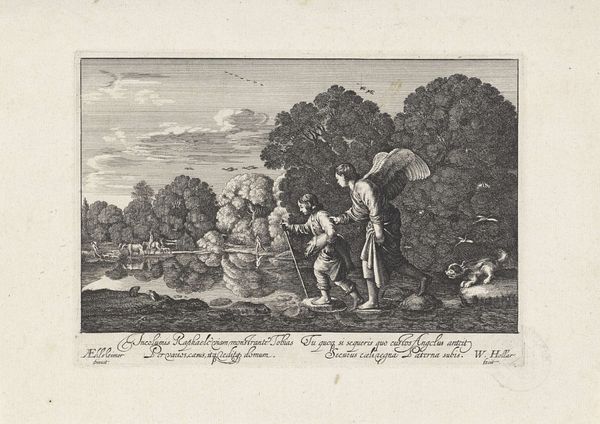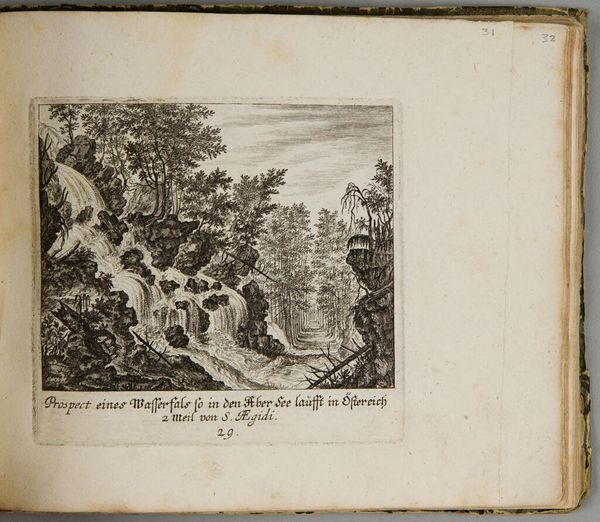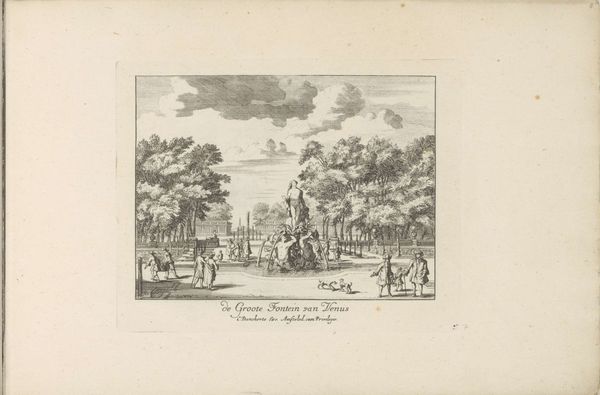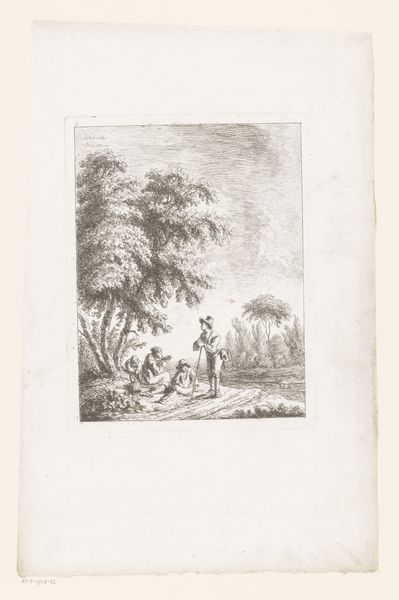
drawing, paper, watercolor, ink, pen
#
drawing
#
water colours
#
dutch-golden-age
#
landscape
#
figuration
#
paper
#
watercolor
#
ink
#
coloured pencil
#
pen
#
genre-painting
Dimensions: height 313 mm, width 204 mm
Copyright: Rijks Museum: Open Domain
Curator: The work we're looking at is entitled "Herderspaar," or "Shepherd Couple," created around 1652 by Gesina ter Borch. It’s currently held in the collection of the Rijksmuseum. Editor: It’s such a delicately rendered scene! The composition is very simple, a seemingly naive style – a seated woman holding flowers, a man in a tree playing a flute – there is something folksy, immediate about it, a miniature stage for rural life. Curator: Yes, but that "naive" aesthetic belies a complex engagement with artistic and social currents. Ter Borch, though from a privileged background, engaged with genre painting which was becoming increasingly popular in the Dutch Golden Age, and often elevated through the academy. She is choosing a mundane subject to create her art with a sophisticated grasp of technique. Editor: True, it is much more sophisticated from a technical point of view than one may think at first. When we look closer, the layering of watercolor and ink, we appreciate how she builds form and light through very fine applications of materials, a certain material economy at play to make such soft tones. You can even see where she's used a coloured pencil, adding dimension in her rendering of form. What type of papers do you think she used? Curator: Most likely a high-quality laid paper, which would have provided a stable and subtly textured surface for her delicate washes. But back to the socio-political element, remember that the idealized peasant was a common figure in art meant to appeal to city audiences as a symbol of rural virtue, however contrived that image may have been. How interesting that a woman such as ter Borch created art that could resonate on different registers: at the Court as well as for the average family. Editor: I like how you can really see that, thinking about these people portrayed are almost archetypes more than a mirror of an actual subject she saw and transferred directly onto the paper. Curator: Exactly. The piece provides a glimpse into the aspirations and self-image of the Dutch Republic at this moment in time, while it is a precious memento. Editor: Indeed, we get a glimpse not only into what this artist felt compelled to do, and her process as it related to the broader landscape in which she worked. Curator: Precisely. It all contributes to what we are viewing today as something to enjoy from then. Editor: Thank you!
Comments
No comments
Be the first to comment and join the conversation on the ultimate creative platform.

